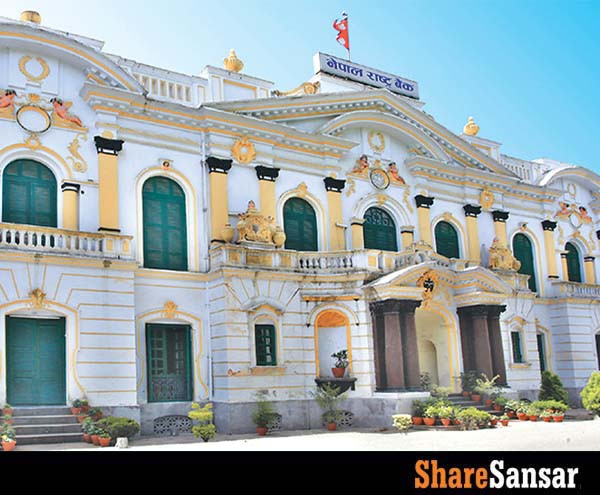Nepal Rastra Bank Unveils Monetary Policy for FY 2081/82: Removes Institutional Cap on Share Collateral Loans

Governor Maha Prasad Adhikari of Nepal Rastra Bank (NRB) has unveiled the first monetary policy for the current fiscal year 2081/82.
The key highlights of the monetary policy are as follows:
The NRB has abolished the maximum limit on share collateral loans for institutional investors. Governor Adhikari announced this measure during the presentation of the monetary policy on Friday. The previous cap of Rs. 20 crore, established due to the inefficiency of margin trading for institutional investors, has been removed. However, the central bank has retained the cap for individual investors.
The monetary policy states, "To gradually reduce direct lending investments from banks and financial institutions in the securities market and to promote the concept of margin trading, Nepal Rastra Bank has so far granted approval to 34 securities broker companies. Given the current inefficiency in margin trading, the existing maximum limit of Rs. 20 crores on margin-type share collateral loans provided by banks and financial institutions to institutional investors will be abolished."
The NRB has also reduced the provisioning requirement for performing loans, lowering it from 1.20 percent to 1.10 percent. This reduction in provisioning is expected to increase the profitability of banks.
NRB has prioritized the merger of microfinance in its monetary policy. According to the NRB, mergers and acquisitions between microfinance financial institutions.
Addressing concerns regarding microfinance institutions, the NRB has prioritized customer protection based on international best practices. The policy includes regulatory measures to protect customer interests and addresses complaints related to microfinance services.
The policy mentions a contemporary review of the regulatory framework concerning interest rates and service charges imposed by microfinance institutions. Currently, these institutions are allowed to charge a maximum interest rate of 15 percent on loans.
Provisions will also be made to allow microfinance customers who are unable to repay loans due to unforeseen circumstances to restructure their loans by paying a certain percentage of the interest.
Furthermore, the central bank has decreased the policy rates. The policy rate has been reduced from 5.5 percent to 5 percent, and another key policy rate has been lowered from 7.5 percent to 7 percent. The lower limit deposit collection rate remains unchanged.
The NRB has increased the target for credit expansion to 12.5 percent for the current fiscal year, up from 11.5 percent in the previous year.
This monetary policy aims to address the challenges in the capital market and promote financial stability and growth in the banking sector.
NRB's monetary policy for the fiscal year 2081/82 BS includes reducing the risk burden for real estate, high-value vehicles, and share mortgages up to Rs 5 million, and easing the loan loss system for good loans.
NRB will not blacklist institutions funded by private equity and venture capital, even if their investments face issues, to promote investment and provide greater security.

